Can food waste end world hunger?
- Like
- Digg
- Del
- Tumblr
- VKontakte
- Buffer
- Love This
- Odnoklassniki
- Meneame
- Blogger
- Amazon
- Yahoo Mail
- Gmail
- AOL
- Newsvine
- HackerNews
- Evernote
- MySpace
- Mail.ru
- Viadeo
- Line
- Comments
- Yummly
- SMS
- Viber
- Telegram
- Subscribe
- Skype
- Facebook Messenger
- Kakao
- LiveJournal
- Yammer
- Edgar
- Fintel
- Mix
- Instapaper
- Copy Link
Posted: 4 October 2017 | SHAHIN RAHIMIFARD - Professor of Sustainable Engineering at Loughborough University | 1 comment
There are currently over 800 million chronically undernourished people in the world. Yet we produce 4 billion tonnes of food every year, more than enough to feed the 7.5 billion people who live on the planet. Unfortunately, a large proportion of all food produced never reaches a human mouth: it is estimated that between 1.2 and 2 billion tonnes of food (i.e. between 30-50 percent of all food produced) is wasted. In this article Shahin Rahimifard explains why this clearly demonstrates the significant inefficiencies of global food supply chains.
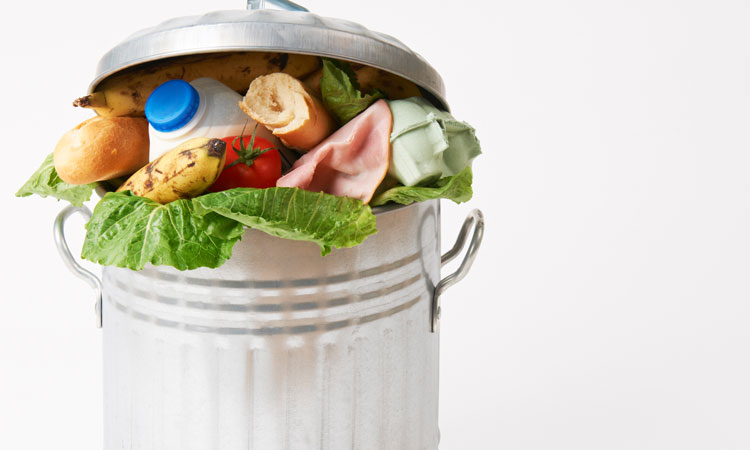

The reduction and/or elimination of food waste is one of the most important challenges faced by mankind. If our current global food system cannot feed 7.5 billion people today, how can it feed nearly 10 billion people in 2050? Increasing food production has often been proposed as the solution, but global warming and climate change may severely impact our ability to produce more food. In this context, reducing the quantity of food wasted may be our only option to ensure fair and equitable access to food for the global population. The Food and Agriculture Organization (FAO) of the United Nations estimates that eliminating only a quarter of the food presently wasted would be enough to end global hunger today.
Options for tackling food waste
The issues associated with wasting food are not only ethical. Food waste must be collected, treated and safely disposed of, and this creates significant negative impacts with environmental, economic and social ramifications. From the range of existing solutions to manage food waste, some are ‘sustainable’, such as anaerobic digestion and composting, others are ‘unsustainable’ namely food sent to sewer and landfill. Clearly, options that minimise all of these impacts must be prioritised.
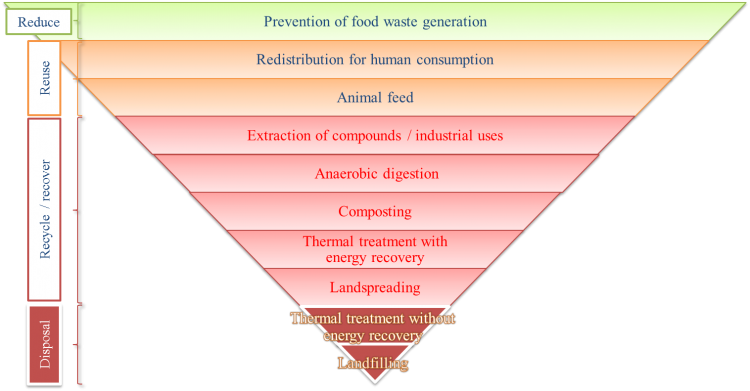

Figure 1: SMART Waste Management Hierarchy for Food Products
Once the waste has been created, the most sustainable solution according to the food waste management hierarchy developed by researchers at the Centre for SMART is to ‘reuse’ it (see Figure 1). Existing options for reusing food waste that is still edible include redistributing the food to people in need through charitable organisations like food banks, or reusing it as animal feed. However, a new option is being explored which involves the extraction of substances and ingredients in food waste to create new food products. Clearly, such an approach to ‘valorisation of food waste’ would be a sustainable solution: it reduces the environmental impact of managing food waste, provides an additional source of revenue for manufacturers, and creates a positive social impact by ensuring that more of the food ingredients being generated are consumed by people.
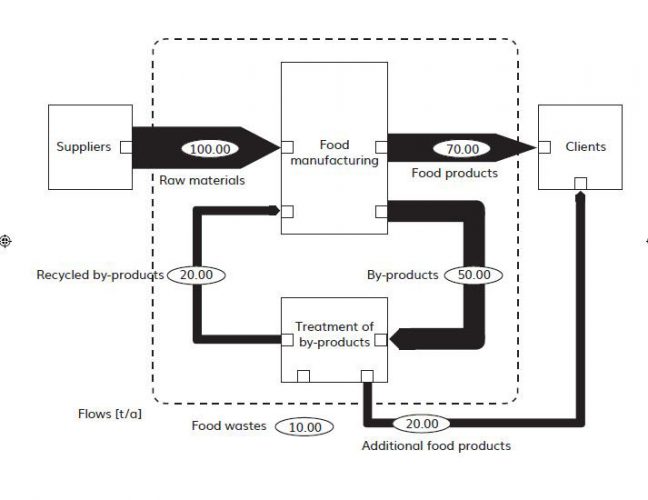

Figure 2: Industrial processing steps to valorise by-products to create additional food products
However, this option requires industrial processing steps to make sure that the material extracted from food waste is suitable for human consumption and meets the quality standards required by national and international food agencies (Figure 2). In this context, a methodology is needed to quantitatively assess the long-term sustainability of proposed valorisation solutions. The results of this assessment should be used by decision makers to determine the most sustainable solution for a particular food waste management scenario. Since today’s food systems are global, ideally this methodology should be applicable to all types of food companies, stages of the food supply chain and regions of the world.
Modelling
A systematic methodology for food waste management should include a modelling of waste flows in a precise geographical scope, e.g. a food company, a city or a region. This type of waste flow modelling is vital in order to collect various data relating to quantity and types of food waste, location and patterns of food waste generation, inconsistency of waste quality and seasonality, possible contamination with other waste, and the pros and cons of currently applied food waste management practices.
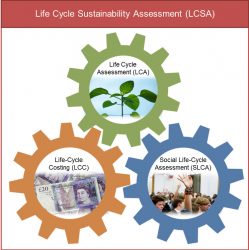

Figure 3
Established methodologies such as Life Cycle Assessment (LCA), which has been standardised by the International Organization for Standardization (ISO 14040 -14044:2006), can be used to study environmental impacts. LCA enables the assessment of impacts associated with all life cycle stages of a food product: harvesting, manufacture, distribution, consumption and end of life. Examples of ‘environmental impact factors’ commonly assessed with LCA are resource depletion, greenhouse gas generation, eutrophication, acidification, stratospheric ozone depletion, photooxidant formation (smog), toxicological stress on human health and ecosystems as well as other concerns such as noise generated at waste treatment plants.
LCA requires large amounts of data to be collected, which often relies on the measurements of impacts in situ or modelling and simulation of various activities across a product lifecycle. Once these measurements have been made and recorded, they can be introduced into a database for future studies. The use of databases and process modelling is significantly simplified with bespoke software tools, such as SimaPro and GaBi, which are now popular in both academia and industry.
Data challenge
In spite of the rapid growth in the use of LCA tools to assess production processes, the lack of dependable and verified data is still the biggest challenge in adopting such tools in some food waste management practices. Furthermore, LCA only covers the environmental consequences of food waste management, but to identify the most sustainable solution other socio-economic aspects must be considered. In this context, a new methodology has recently been proposed, termed Life Cycle Sustainability Assessment (LCSA) (see Figure 3), which encompasses analysis of environmental impacts (LCA), economic performance (Life-Cycle Costing – LCC) and social considerations (Social Life-Cycle Assessment – SLCA). Although an integrated approach to applying these assessment methodologies is in its infancy, the initial application is promising and is expected to be standardised and widely used in the near future.
Valorisation of food waste to extract ingredients and make more food products fit for human consumption provides a truly sustainable vision for managing our food waste, however further research is required to ensure that this is economically viable, environmentally sensible, and most importantly, acceptable to food consumers.
Biography
Shahin Rahimifard is a Professor of Sustainable Engineering (since April 2009) at Loughborough University and the Founder and Director of the Centre for Sustainable Manufacturing and Recycling Technologies (SMART). Professor Rahimifard is currently the Deputy Director of a UK National Centre for ‘Innovative Food Manufacturing’ in which he is leading a wide range of research ranging from ‘resource efficient localised production of food products’ and ‘valorisation of food waste for human nutrition’ to ‘embedding resilience within global food supply chain’.
The rest of this content is restricted - login or subscribe free to access
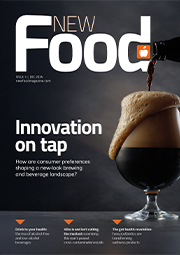

Why subscribe? Join our growing community of thousands of industry professionals and gain access to:
- bi-monthly issues in print and/or digital format
- case studies, whitepapers, webinars and industry-leading content
- breaking news and features
- our extensive online archive of thousands of articles and years of past issues
- ...And it's all free!
Click here to Subscribe today Login here










This is the need of the hour, I am interested in researching more into it. I believe sustainable solutions will emerge. Thank you Prof.